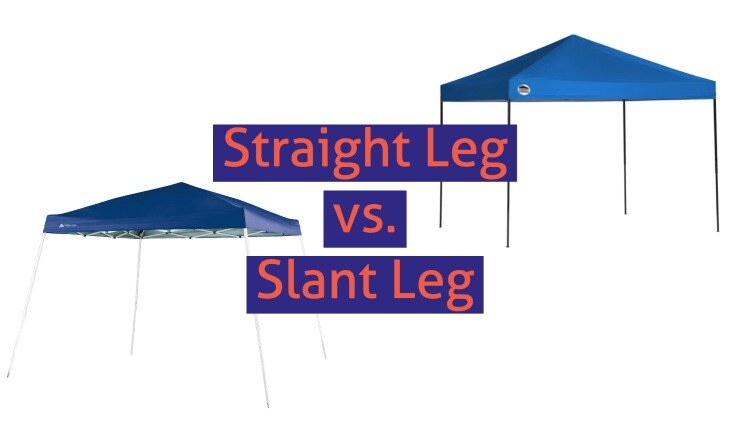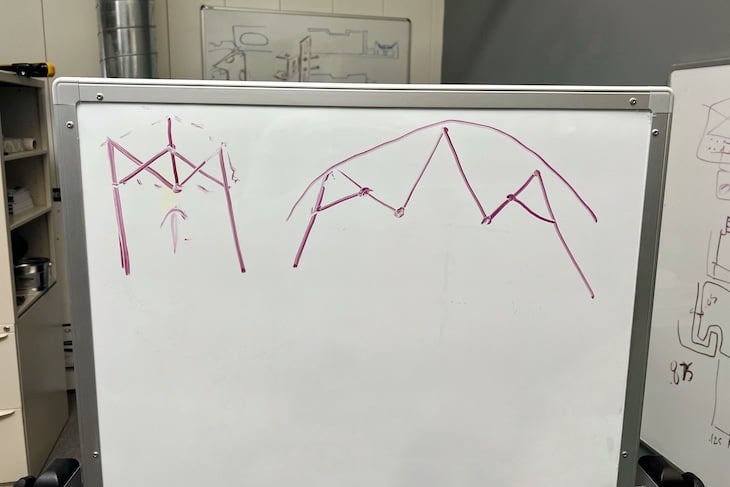
Slant Leg vs Straight Leg Canopy: Why One is WAY Cheaper
So, for those of you who are enticed by the cheap prices of slant leg canopies, we’re here to warn you to not waste your money - even if it only costs you $75 or $100.
Rest assured, too, when we say we’re not using this article to sway you to buy a heavy-duty pop-up canopy tent from TentCraft. We manufacture and sell professional-grade, custom structures at prices that likely aren’t in the budgets of consumers who are shopping for a 10x10 pop-up tent in the $100-$300 range. Those are recreational-grade tents that wouldn’t hold up to the type of use our customers demand. We simply want you to get the best bang for your buck, even if you are shopping for recreational-grade pop-up tents.
Slant leg canopies use less material and have less structural integrity than straight leg canopies. That's why when you dive into online reviews, you see slant leg tents that have broken at different connection points, and customers complaining that it failed after only a few uses.
What's the difference between straight leg and slant leg canopy?
The names are pretty straightforward, but once you dive into the details, you can have a better idea of what’s being sold to you.
A straight leg canopy (obviously) utilizes a straight leg profile. If it’s manufactured correctly, each leg should form a 90-degree angle with the floor.
Additionally, the size of a straight leg canopy defines how much shade and protection you have under the canopy. Let’s say you’re shopping for a 10x10 pop up canopy, you can be confident that you have 100 square feet of protection under that canopy.
RELATED: The Best Straight Leg Canopy Tents
That’s not the case with a slant leg canopy tent which, as you may have guessed, features legs that are slanted and form an angle of less than 90 degrees with the floor.
Take this Impact Canopy 10x10 slant leg tent, for example. It’s advertised as a 10x10 tent, but your canopy is actually 7.8’ x 7.8’, for about 61 square feet of space under the canopy. That’s 40% less than a straight-leg canopy tent. If canopy coverage is important to you, this is a very good reason to go with a straight-leg option.
Structural Integrity: Slant Leg or Straight Leg Canopy?
As an American manufacturer of pop-up tents, we’re committed to building structures that can survive in strong wind and inclement weather. That’s why we employ a team of engineers who design and battle-test our products to perfect.
That team is also pretty helpful to have when our marketing team needs to explain why a straight leg canopy has more structural integrity than a slant leg canopy.
Ryan Gemmell, a TentCraft design engineer, explained why using two decks of cards. If they’re standing straight up, you can place something on top (let’s say another deck of cards), and it will continue to stand up, despite there being no physical connection point.
“When the legs are slanted, it’s completely dependent on those connection points,” Gemmell said.
Think of that trick you may have done in a middle school physics class, where a student successfully stands on top of an empty pop can until another student flicks the middle of the can and compromises its structural integrity and the can compresses to the ground.
There’s a reason why makers of professional-grade canopies only use straight-leg frames.
Aluminum vs. Steel Frame
It’s also important to note that nearly all recreational-grade tents — no matter if they’re straight leg or slant leg — use thin steel frames, which are significantly weaker than anodized aluminum frames of similar weight. That’s because 1) steel is much more affordable than aluminum, and 2) aluminum is about a third of the weight of steel, allowing manufacturers like us to create tent legs that are significantly thicker than steel counterparts while maintaining a reasonable weight for transportation. Aluminum tent legs not only have a larger leg diameter (1” for steel vs. 2” for aluminum) but the thickness (or gauge) of aluminum is twice that of steel.

heavy duty (2mm thick) vs medium duty (2mm thick) vs steel leg profile (1mm thick)
Most of the cheap 10x10 slant leg tents weigh about 25 pounds, so you can assume the material is extremely thin and delicate, making the tent susceptible to breaking after minimal use, especially if you’re using it in windier conditions.
Why Are Slant Leg Canopy Tents Cheaper Than Straight Leg?
Slant leg canopy tents are cheaper than straight leg tents because they use less material.
As we mentioned above, the canopy of a 10x10 slant leg tent is 40% smaller than a straight leg canopy tent of the same size. So, right off the bat, you’re saving money because there is less soft goods material.
But as you look at different slant leg tents, you’ll also notice the frames use less steel and have fewer plastic connection points. Here’s a sketch one of our engineers made to explain the slant leg design.

“There’s less scissor material, which means less total metal - and that’s why some of these companies can sell a tent for under $100,” Gemmell said.
Stop Buying Cheap Tents
Like we mentioned above, we’re here to educate you on the different styles of pop-up tents. We know everyone isn’t a good fit for professional-grade TentCraft structures, and that’s OK! But if and when you’re tired of replacing cheap tents, reach out to us to learn more about what American-made quality looks and feels like.